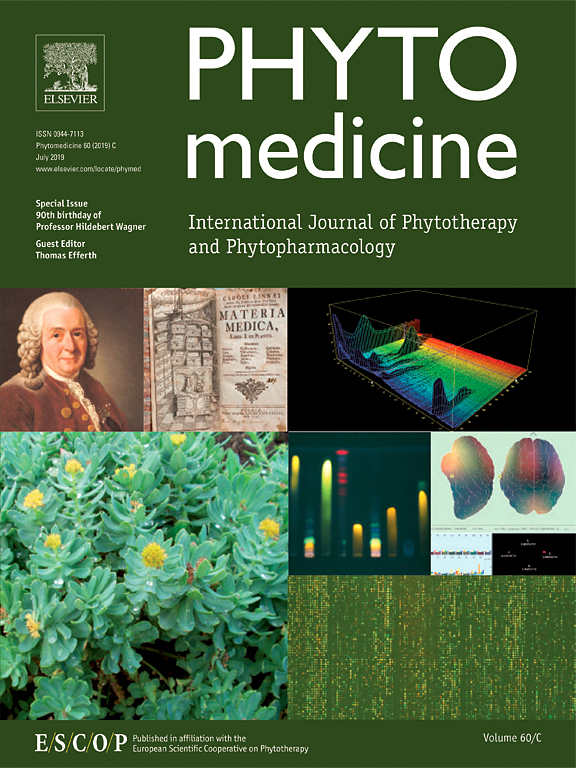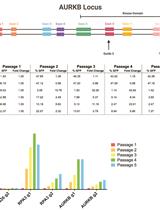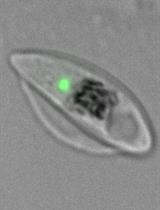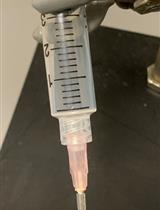- EN - English
- CN - 中文
In vitro Screening of Antileishmanial Activity of Natural Product Compounds: Determination of IC50, CC50 and SI Values
天然复合产物抗利什曼原虫活性的体外筛选:IC50、CC50和SI值的测定
(*contributed equally to this work) 发布: 2019年11月05日第9卷第21期 DOI: 10.21769/BioProtoc.3410 浏览次数: 5308
评审: Alexandros AlexandratosSrujana Samhita YadavalliAdam Idoine
Abstract
Neglected tropical diseases gain the scientific interest of numerous research programs in an attempt to achieve their effective control or elimination. In this attempt, more cutting-edge public health policies and research are needed for the discovery of new, safer and effective drugs originated from natural products. Here, we describe protocols for the in vitro screening of a natural product-derived compound required for the determination of its antileishmanial potency. For this purpose, the Total Phenolic Fraction (TPF) derived from extra virgin olive oil is evaluated through the in vitro cell culture method against extracellular promastigote and intracellular amastigote Leishmania spp. forms. The aim of this article is to describe a step-by-step procedure that can be easily applied to accurately estimate the 50% inhibitory concentration (IC50), the 50% cytotoxic concentration (CC50) and the selectivity index (SI) via the resazurin reduction assay. These protocols are based on the ability of resazurin (oxidized blue form) to be irreversibly reduced by enzymes in viable cells and generate a red fluorescent resorufin product and can be easily expanded to the investigation of the antimicrobial activity in other microorganisms.
Keywords: Cytotoxic concentration (细胞毒性浓度)Background
Neglected tropical diseases (NTDs) are a group of about 20 diseases, typically endemic in 149 tropical and subtropical countries that represent a significant public health impact worldwide by affecting more than 1 billion people and being responsible for over 500,000 deaths per year (Cheuka et al., 2016; Mitra and Mawson, 2017). Until nowadays, drug discovery against NTDs exhibited limited success in translating potential drug candidates into effective therapies. Indeed, the current clinically used drugs against NTDs are characterized by various disadvantages including severe adverse effects, complicated administration procedures, lengthy treatment duration and emergence of resistance (Cheuka et al., 2016). Natural products represent a valuable alternative source of novel and structurally diverse compounds that deserves attention in drug discovery against NTDs. Numerous metabolites isolated from plant, microbial and marine sources such as alkaloids, phenolic compounds, quinones, terpenes, saponins, lignans, toxoids and anthranoids have been investigated (Cheuka et al., 2016) and it has been estimated that approximately at least 25% of the presently used drugs in modern medicine are derived from plants (Lahlou, 2007).
Among NTDs, leishmaniasis is a parasitic disease caused by protozoa of the genus Leishmania spp., causing a range of manifestations and exhibiting progressively increasing frequency in non-endemic western developed countries (Burza et al., 2018). Numerous of agents of natural origin, plant derived bioactive compounds and their secondary metabolites have been tested as antileishmanial drugs, such as flavonoids, sterols, chalcones, coumarins, tannins and aurones, iridoids, quinones and quinolone alkaloids (Singh et al., 2014). The assessment of the bioactive potential of biological extracts or molecules involves numerous assays performed at animal, cell-based or molecular levels (Lage et al., 2018) while the first steps of the biological screening and evaluation of plant extracts usually involve the screening of compounds in cell-based in vitro assays (Griffiths and Sundaram, 2011).
The half maximal inhibitory concentration (IC50) is a representative quantitative measure of the potency of a substance to inhibit in vitro a specific biological process by 50%, (Lahlou, 2007; Aykul and Martinez-Hackert, 2016) and is primarily defined through in vitro test models. Since Leishmania spp. have a digenetic life cycle, the antileishmanial effect of drugs is tested on both the promastigote (infective form in the intermediate host) and the amastigote form (intracellular form in the tissue of the mammalian host) (Bates and Rogers, 2004). In this regard, IC50 is determined for both promastigotes and intracellular amastigotes and is defined as the concentration of a compound that causes inhibition of growth in the 50% of Leishmania promastigotes and of intracellular amastigotes, respectively. To this end, the in vitro screening of the antileishmanial activity of Total Phenolic Fraction (TPF) is performed on L. infantum and L. major promastigotes and on Leishmania-infected J774A.1 macrophages in which amastigotes survive and multiply (Bilbao-Ramos et al., 2012). Moreover, the cytotoxicity of TPF in vitro against J774A.1 macrophages is also tested through the determination of the CC50 (cytotoxicity concentration 50%) that is the compound’s concentration that causes cytotoxicity in the 50% of the cells (Kyriazis et al., 2013). In addition, we employ the selectivity index (SI) that is defined as the ratio of the 50% cytotoxic concentration of J774A.1 macrophages to the 50% inhibitory concentration of Leishmania spp. amastigotes (CC50/IC50). A compound with SI value greater than 1 is considered to be more selective against Leishmania spp. parasites and is regarded as a promising potential agent in the treatment of leishmaniasis (Makwali et al., 2015). All the above indices are crucial in order to conclude whether or not a tested compound is appropriate as an antileishmanial agent.
Materials and Reagents
- Cell culture flasks with filter cap, 25 cm2 (Thermo Fisher Scientific, catalog number: 156367)
- Cell culture flasks, plug seal cap, 25 cm2 (Greiner Bio-One, catalog number: 690160)
- 96-well flat bottom tissue culture plates (Sarstedt, catalog number: 83.3924.005)
- Cell scrapers (Sarstedt, catalog number: 83.1830)
- Cover glasses square (VWR, catalog number: 6311570)
- Parafilm (Bemis, catalog number: HS234526B)
- Pipette tips: 0.5-10 µl, 10-200 µl, 200-1,000 µl (Greiner Bio-One, catalog numbers: 771291, 739290, 740290)
- Multichannel pipette reservoir (Brand, catalog number: BR703411)
- Pleated filter paper (Sigma-Aldrich, catalog number: WHA1201150)
- Microcentrifuge tubes, 1.5 ml (Greiner Bio-One, catalog number: 616201)
- Serological pipettes 2 ml, 5 ml, 10 ml (Sarstedt, catalog numbers: 86.1252.001, 86.1253.001, 86.1254.001)
- Syringes 5 ml (BD Emerald, catalog number: 307732)
- Sterile syringe filter 0.22 µm (Millipore, catalog number: SLGVV255F)
- Leishmania infantum promastigotes (zymodeme GH8, strain MHOM/GR/2001/GH8)
- Leishmania major promastigotes (zymodeme LV39, strain MRHO/SU/59/P)
- Immortalized macrophage cell line J774A.1 (ATCC; Rockville, USA/ ATCC No: TIB-67)
- Total Phenolic Fraction (TPF) (derived from extra virgin olive oil from agricultural cooperative in Zaros region, Crete, Greece)
- RPMI 1640 w/o L-glutamine (Biowest, catalog number: L0501)
- Schneider’s insect medium (Biosera, catalog number: LM-F0702)
- L-glutamine (Biosera, catalog number: LM-R1641)
- HEPES buffer 1 M (Biowest, catalog number: L0180)
- Penicillin-Streptomycin solution 10,000 U/ml (Biowest, catalog number: L0022)
- Dimethyl sulfoxide (DMSO) cell culture grade (PanReac Applichem, catalog number: A3672,0050)
- Ethanol absolute (Sigma-Aldrich, catalog number: 32205-M)
- Formalin (Sigma-Aldrich, catalog number: R04586-82)
- Milteforan® 20 mg/ml (Hexadecylphosphocholine, [HePC], Virbac S.A.)
- Resazurin sodium salt (7-Hydroxy-3H-phenoxazin-3-one 10-oxide) (Sigma-Aldrich, catalog number: R7017)
- Trypan blue dye for vital staining (BDH, catalog number: 34078)
- Potassium chloride (KCl), ACS reagent, ≥ 99.0% (Sigma-Aldrich, catalog number: 746336)
- Potassium phosphate monobasic (KH2PO4), ACS reagent, ≥ 99.0% (Sigma-Aldrich, catalog number: 795488)
- Sodium chloride 99.9% (NaCl) (Applichem, catalog number: 381659)
- Sodium phosphate dibasic (Na2HPO4), ACS reagent, ≥ 99.0% (Sigma-Aldrich, catalog number: 795410)
- Sodium Dodecyl Sulfate (SDS) (Sigma-Aldrich, catalog number: L4509)
- Fetal Bovine Serum (Biowest, catalog number: S181B) (see Recipes)
- Complete RPMI-1640 medium (see Recipes)
- Complete Schneider’s medium (see Recipes)
- Phosphate buffered saline, 1x (PBS, pH 7.2) (see Recipes)
- Resazurin solution (see Recipes)
- 0.4% (w/v) Trypan blue exclusion dye (see Recipes)
- 0.01% w/v Sodium Dodecyl Sulfate (SDS) (see Recipes)
- Lysis solution (see Recipes)
Equipment
- Agitating water bath (Labtech, catalog number: LSB-015S)
- ELISA Microplate reader (Dynatech Laboratories, catalog number: MRX)
- Gilson pipettes (Gilson, models: PIPETMAN Classic P-10, P-20, P-200, P-1000)
- Multichannel pipette (Brand, catalog number: 703710)
- Malassez counting chamber (Paul Marienfeld GmbH & Co., catalog number: 0640610)
- Microplate rotor (Centurion Scientific Ltd, catalog number: BRK 5530)
- New BrunswickTM Galaxy® 170 S CO2 Incubator (Eppendorf, catalog number: Galaxy 170 S)
- Refrigerated centrifuge (Centurion Scientific Ltd, catalog number: PrO-Research K241R)
- Optical microscope (Olympus, catalog number: BHB)
- pH meter (Thermo Fisher Scientific, catalog number: 13-644-928)
- Pipette controller (Brand, catalog number: accu-jet® pro 26300)
- Refrigerated Incubator 26 °C (Sanyo, catalog number: MIR-253)
- Sterile biosafety cabinet (Telstar, catalog number: Bio-II-A)
- Water distiller (Sartorius, catalog number: H2O-I-1-UV-T)
Software
- Microsoft® Office Excel 2010 (Microsoft)
Procedure
文章信息
版权信息
© 2019 The Authors; exclusive licensee Bio-protocol LLC.
如何引用
Koutsoni, O. S., Karampetsou, K. and Dotsika, E. (2019). In vitro Screening of Antileishmanial Activity of Natural Product Compounds: Determination of IC50, CC50 and SI Values. Bio-protocol 9(21): e3410. DOI: 10.21769/BioProtoc.3410.
分类
微生物学 > 抗微生物试验 > 杀寄生虫药试验
细胞生物学 > 细胞活力 > 细胞存活
您对这篇实验方法有问题吗?
在此处发布您的问题,我们将邀请本文作者来回答。同时,我们会将您的问题发布到Bio-protocol Exchange,以便寻求社区成员的帮助。
提问指南
+ 问题描述
写下详细的问题描述,包括所有有助于他人回答您问题的信息(例如实验过程、条件和相关图像等)。
Share
Bluesky
X
Copy link












